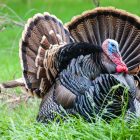Although from an outside perspective hunting clothing seems to consist of little more than camouflage and blaze orange vests, selecting the proper clothing for a day in the woods can be critical to your success, enjoyment, and in some extreme cases, even your survival. When establishing what you’re going to be wearing, it is important to look at things in layers, as weather and circumstances can call for very different clothing and can change multiple times throughout the course of a trip.
The first layer you will need is your base layer. This is one of the most important layers you will have as it is in direct contact with your body and will help to regulate your body temperature and wick moisture away from your body. You want this layer to be snug, often coming in the form of fitted long sleeve shirts and leggings. Fit is important as it will affect the functionality of your base layers. Obviously you don’t want a garment that is so tight that it restricts movement and is uncomfortable, but having a base layer that stays close to the body and is relatively form fitting is important. They are designed to trap the warmth of your body and as mentioned above, wick moisture away from the body. If the garment is too loose, body warmth will be lost during movement as air is able to move away from the body through the loose clothing. Further, if it does not rest against the body, it will not draw moisture away as effectively, leaving you more susceptible to getting cold when you’re out on your hunt. In terms of material, nothing beats merino wool, combining breathability and warmth like no other material. While synthetic and cotton alternatives will be much cheaper in price, this is not a layer you want to cheap out on, as a wet base layer will make it nearly impossible to stay warm no matter what other layers you have on.
The next layer you will want to have covered is your mid-layer. This layer can contain multiple pieces depending on the temperature, typically a quiet and well-fitting pair of pants paired with a merino sweater, hoodie, or even an insulated mid-layer jacket. While this layer does not necessarily have to be camouflage, if you are wearing non-hunting purposed sweaters try to avoid bright colors as hard hiking or warm temperatures may require you to wear this layer in the field. As with base layers, mid-layers are again designed to keep you warm and trap body heat. I will often wear my mid-layer when hiking into spots early in the morning to avoid sweating, ensuring that I am warm and dry by the time I get to the area I will be hunting. This is an important note to consider as many hunters will gear up and head out to their hunting area in what they intend to wear throughout the day. However, if you’re gearing up to stand in -20 conditions for hours but will be making a several mile hike in, this gear will be far to warm for your hike in with the body heat you will be generating. If you don’t layer down, you’re sure to build up a sweat that could make you irreversibly cold once you slow down.
The third layer in the setup is your outer layer. This outer layer is adjusted according to conditions, such as a heavy winter coat and insulated pants for fall Elk hunting or a light breathable jacket for spring Turkey. These layers are essential for blocking the wind, keeping you dry, and depending on your layering system, keeping you warm. The primary functions of blocking wind and keeping your dry are essential in this layer. If the wind is able to penetrate your clothing it can very quickly move the heat away from your body and cool you down. Stopping the wind allows your other layers to do their job and keep you warm. Depending on your outer layer it may also be the insulation keeping you warm, an example of this is a heavier insulated winter jacket versus an exterior shell. Keeping you dry is also important, as we mentioned once you get wet, you’ll get cold quickly and it is hard to dry out and get warm from here. If you have a water-resistant and insulated outer layer, you will want to make sure to have a good rain jacket as well. Select one that will fit over your insulated layer. This is in case you run into some wet conditions, as water-resistant will only keep you dry so long. Another thing to watch out for in your outer layer is the noise. Some materials are much louder than others so sticking with hunting-purposed gear is typically the best bet to avoid making too much noise when walking through the woods.
While these three layers will have you covered in most situations, it is often a good idea to have extra clothes packed with you to accommodate for changing conditions or unforeseen events. Though cliche, it is definitely better to be safe than sorry when in the woods, especially when in the back country where things can be much more variable.




